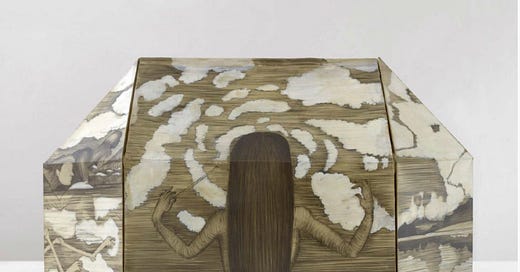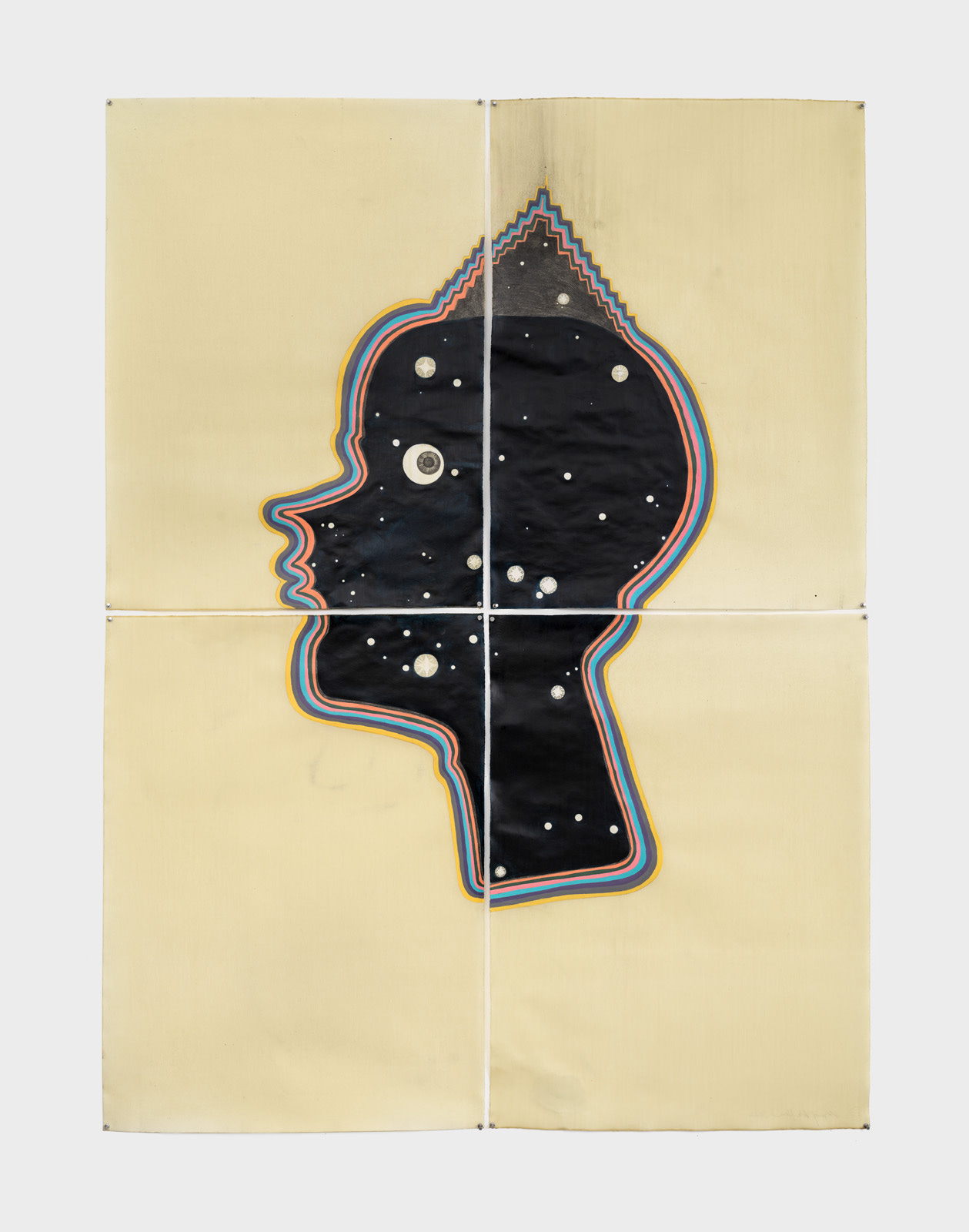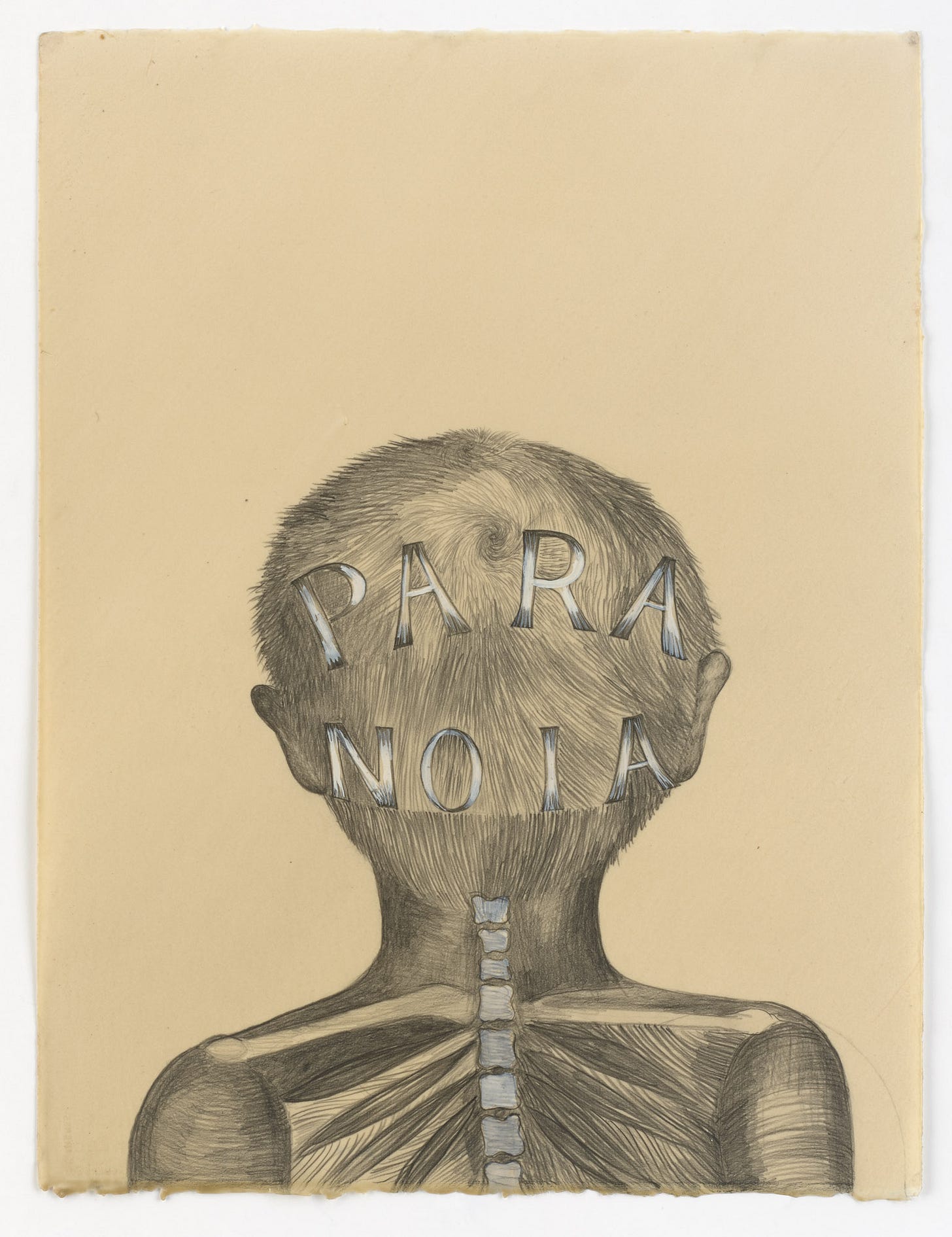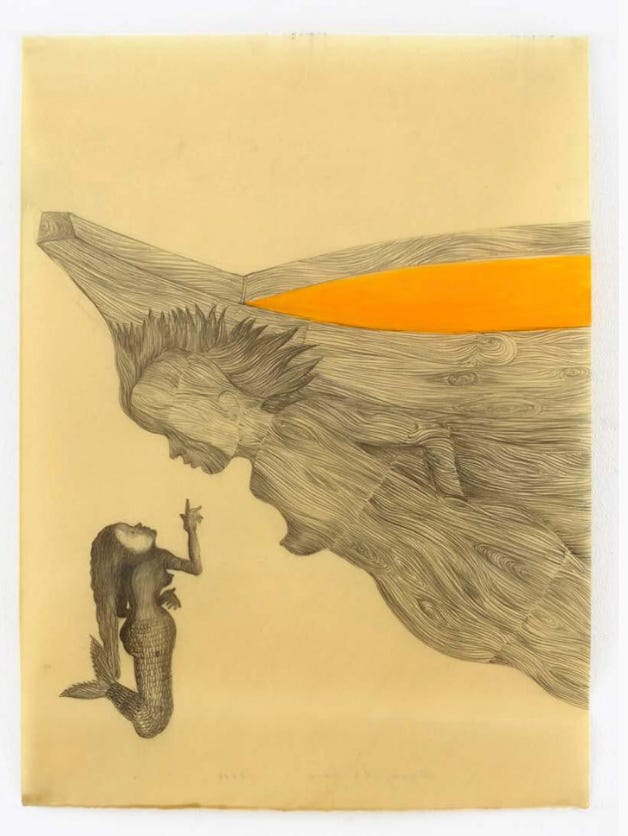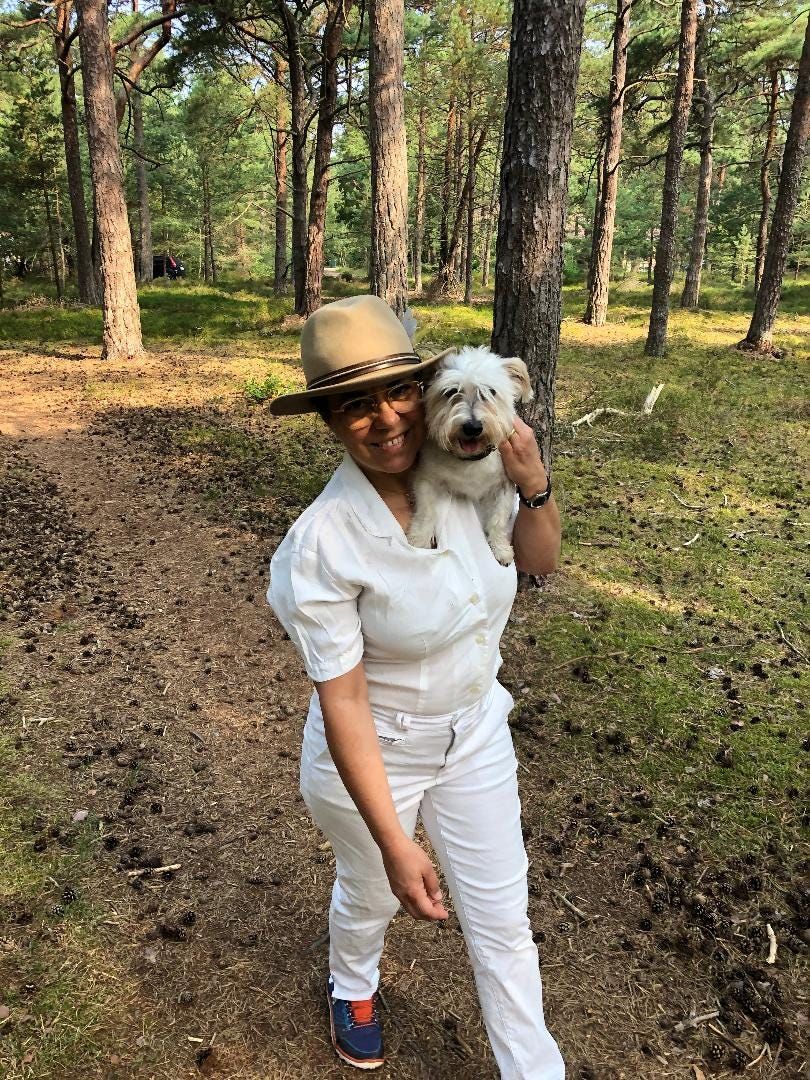Symbolism Dipped In Beeswax
Chatting with Tarantula: Authors And Art feature artist of May 2022, Sandra Vasquez de la Horra
If you are new or have landed on Tarantula: Authors and Art for the very first time, welcome to our monthly interview with our featured artist. Throughout May, we stood in awe as we witnessed the imagination of the Chilean artist Sandra Vásquez de la Horra, especially known for her graphic drawings and sculptures; now you can meet the woman behind the bewildering art that hangs on the walls of this year’s Venice Biennale. If a friend forwarded you this article, welcome; if you like it, share it or why not subscribe?
When I met Chilean artists Sandra Vasquez de la Horra last summer on the sand dunes in Skåne, the southern part of Sweden, she was wearing a beautiful fedora hat and was accompanied by her white terrier Billy. She was reading a book with Bruja (Witch) as one of the words in the title, and I was reading Missing Witches: Recovering The True Histories Of Feminist Magic. We have both just learnt that the amount of witches, or just simply women, that had been burnt exceeded our expectations.
We went for a walk to Alles Stenar, a formation of stones erected in a shape of a Viking boat, where the legend goes that a mythical king was buried there. The wind was blowing hard, Sandra was holding onto her hat so that it wouldn’t fly away, a sunset that seemed to stretch for 360 degrees embraced us, we giggled, feeling the energy of this magic place. At this very moment, I knew that I wanted to feature Sandra in Tarantula: Authors and Art.
A year later, under the spell of the Venice Biennale when disregarded female voices have been pushed to the forefront, Sandra, already a renowned international artist, seems to be everywhere, in galleries from Venice, London, Belgium, Lisabon, etc. Spreading her light and bringing into light that which we keep buried deep into our subconsciousness, she is on a mission during this lifetime to be a light worker; bridge across cultures and constellations, bring sexuality to the surface, confront death and darkness, and lead us by curiosity in order for us to shed our old skin and create space for a new world in which women of all kinds will feel the wind freely on their faces.
TARANTULA: AUTHORS AND ART: Thanks for accepting to chat with us and congratulations on a very busy year full of amazing gallery openings as well as partaking at the Venice Biennial!
Venice Biennale 2022 is the year when more women than man have been included into the show, so we would like to start with asking you how does it feel to be part of this historical moment?
Sandra Vasquez de la Horra: Thank you for the interview, especially in this moment when the focus is on many female artists who have an important role in the collective imagination, but who have been ignored because they did not embark on the art establishment’s interests.
The Venice Biennale 2022 is entitled “The Milk of Dreams,” can you tell us a little bit about your thoughts and inspiration when you found out the name of the Biennale.
The Milk of Dreams like the Milky Way has penetrated from the unconsciousness of being, the chemical process of artists for a transformation beyond matter. Milk as a female creation transforming into a universe to make room for a new way of thinking, and opening the community by giving it the sense for creation.
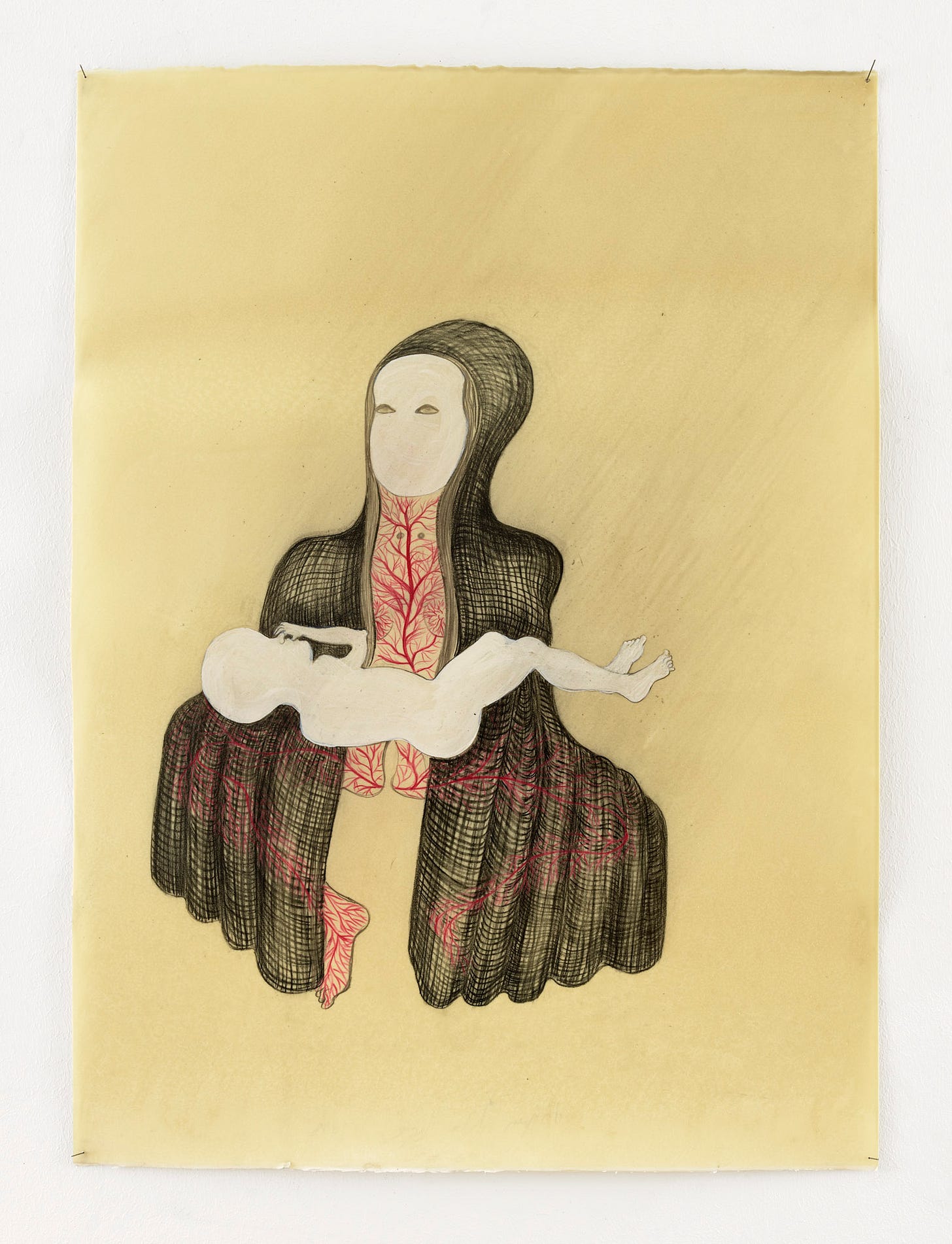
Let’s go a little bit back in time. For our readers who might have been introduced to your art for the very first time, can we talk a little bit about your background? Where were you born and where do you live now?
I come from a Catholic family but I started learning about Buddhism very early on. I also started doing art classes at the school of fine arts at the age of 12. I live in Berlin and some months, I also live in Sweden. My family is of very mixed origins. I have Spanish blood from my grandfather who went into exile; I also have indigenous Aymara blood mixed with old Chilean families.
How does the juxtaposition of those two cultures influence your art? How did moving from one culture to another change you as a person and/or as an artist?
My perception changed when I started observing my culture from afar, and I was always a very curious person, very studious of different cultures. I was always very interested in learning on my trips. Being involved with rituals and shamanism from a very young age also opened up the world to me, which I wanted to understand deeply.
Do you remember when you realized that you wanted to become an artist?
I always knew I'm an artist, I had a natural talent since I was a kid, always creating, playing on the beach making sculptures, always employing materials, always creating.
I was making things all the time, and those things were always large installations with everything that I found, from things from nature, to crumpled papers that I spread out on a table and turned them into drawings. I observed all of nature with curiosity.
As we prepared for this interview, you mentioned that books influenced you; can you share with our readers which books affected your work?
The book that influenced me a lot is called "Man and His Symbols" written by Carl Gustav Jung; it’s key to understand the bridge between cultures.
Let’s talk a little bit about your process. You have a certain way of preparing your paper, you dip it in beeswax, what is the story behind this?
The process of dipping the paper in wax or putting it in a wax bath, so that it can be drawn or painted on, gives the paper a patina, and transforms it into an almost transparent surface that looks like skin. It is not known for sure if a real change happens, this is only reflected upon after this alchemy transformed the material.
What does color mean to you as it feels that you use it very specifically and sparingly?
At first, they were symbolic colors like heraldry. On one hand, the colors were used to make sense of some meaning, for example, like seeing through the eyes of the Yoruba people; but in other pieces, they had another connotation. These days, I move much more freely in the world of color.
You are very prolific, how do you always find the inspiration?
If I am quite prolific, I find inspiration in almost everything. I am very sensitive to nature. I love flowers. I live observing everything. It speaks to me. I also read quite a bit.
You are not afraid to dig deep into our psyche and bring out our biggest fears and nightmares onto the paper, thus your images are at times distorted on the verge of grotesque. How do you want us, your audience, to feel? Do you even think of the audience before you start drawing, or is each work a deep personal conversation with yourself?
My work is not related to expectations, it just happens. It comes from other dimensions needing to communicate; sometimes to release situations. It is a personal process where emotions are released and personal processes often have to do with breaking free.
Looking at your art filled with mythological creatures, symbolism, feels as if we are partaking in some kind of dark ceremony, so I wonder is ritual part of the process of preparation for you before you start drawing? If yes, can you describe this ritual for us.
The rituals of each day, there is no light without darkness. We are current beings seeking light and I consider myself a being of light. I believe in karma and in reincarnation. We have a mission in this life, and I don't feel afraid of mythological figures. I have a deep understanding with the help of Tarot Cards. We have always been linked to death, Eros and Thanatos.
With the newest artwork, “Letting Go” your lady against a blue backdrop finally seems to be free of all the nightmares that your previous subject had to endure. Does this mean that you are in a new place in your life?
That drawing symbolizes to stop fighting, be it to swim or drown or float, and instead take space in life.
My drawings with water or swimming pools or fishing boats are totally metaphorical like jumping into an empty pool, like swimming related to living.
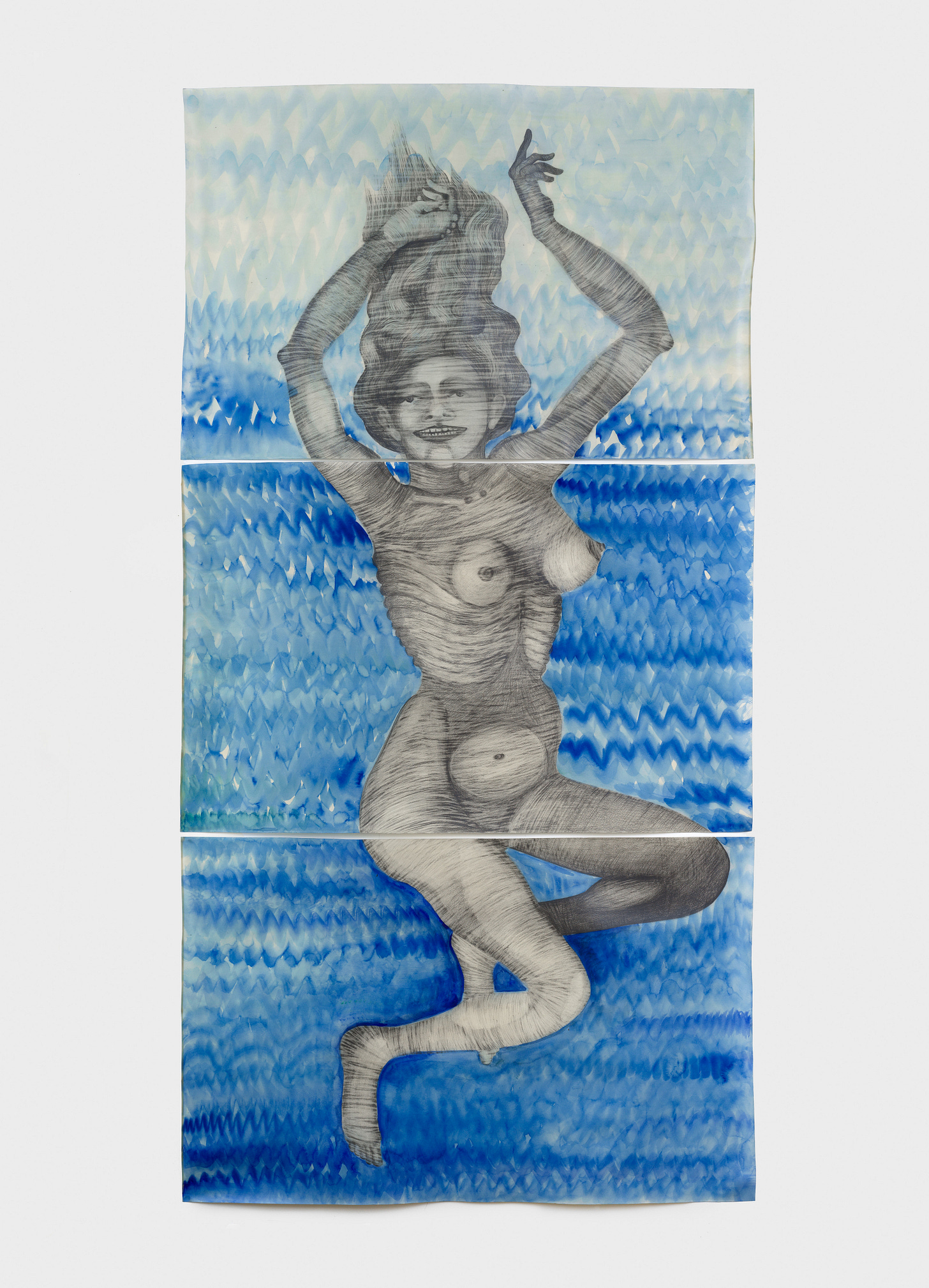
Can you tell our readers which other artists they shouldn’t miss at the Venice Biennale?
My list is quite long: starting with my neighbors at the Bienniale Emma Talbot and Jaider Esbell, followed by the fantastic Violeta Parra with her tapestries; Cecilia Vicuña, a great master giving so much sense of the meaning of precarity as well as poetry.
Paula Rego, unsurpassed; Miriam Cahn, Belkis Ayon, whose works are based on the enigmatic Abakua; and the Chilean pavilion with the Turba Tol Hol-Hol Too, the wonderful project about preserving the peatlands, which is an ecological project of Patagonia.
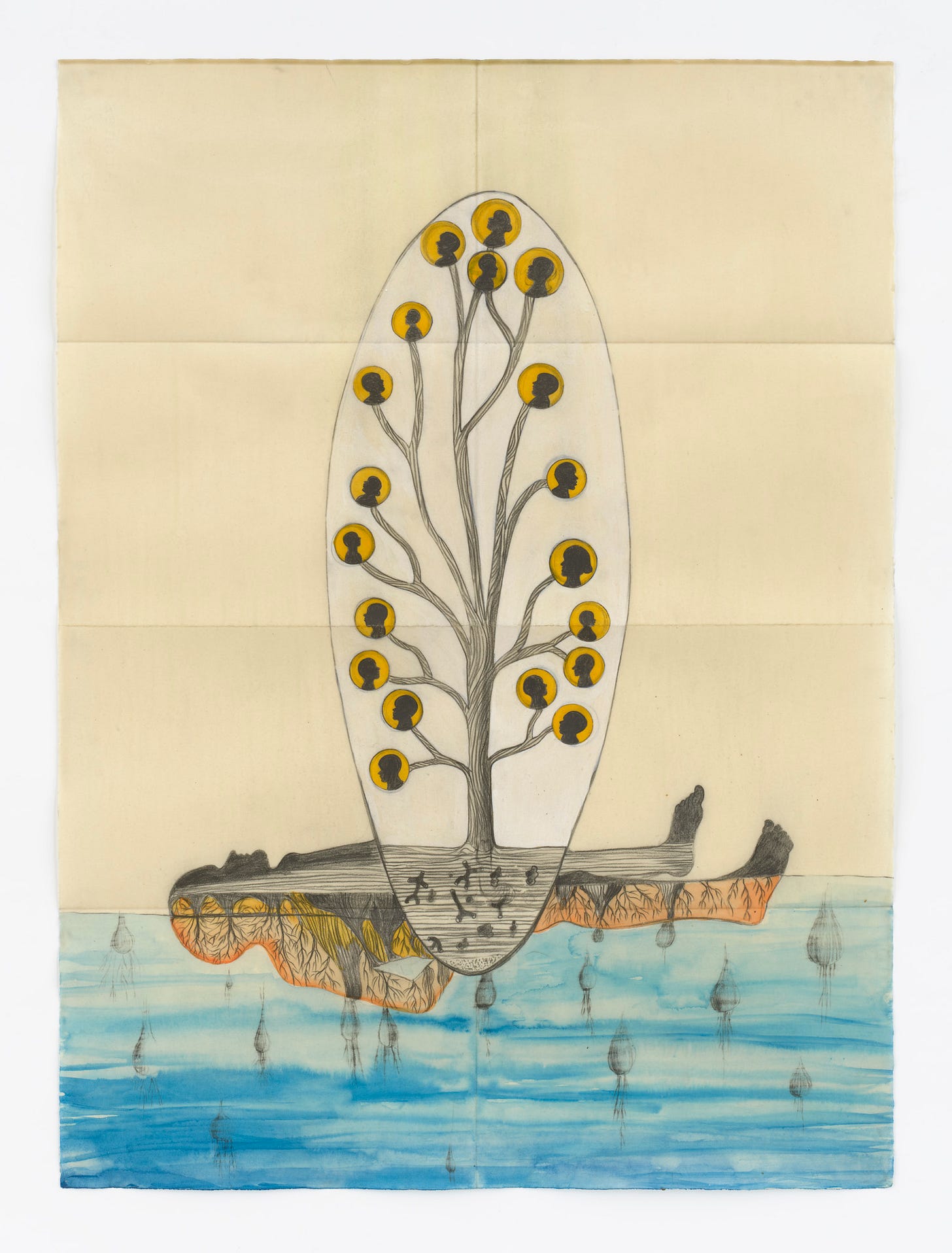
And we can’t finish this interview without asking you about your companion Billy, the terrier, as Tarantula: Authors and Art starts every month with chronicling the world through the point of view of Wolfie, the puppy toy poodle. Are there any anecdotes that you can share with us from an art show or a gallery opening that involves Billy?
One day, I took Billy to a gallery which is in a grand palace with a grand staircase and which is also one of the oldest villas in Berlin, and he took over his role as a guardian. He started attacking all suspicious individuals who entered the gallery. By the way, the gallery owner, Michel Kewenig, thought it was fantastic because at that time there was a series of robberies in Berlin, so the little terrier quickly earned a place in the heart of the one.
To find out more about Sandra’s work, please visit the following internet pages
https://www.vasquezdelahorra.com and follow her on Instagram @sandravasquezdelahorra
Sandra, thank you so much for taking your time to answer these questions. This is definitely your year and we are happy to have had the opportunity to steal you for a second from your busy schedule to chat.

